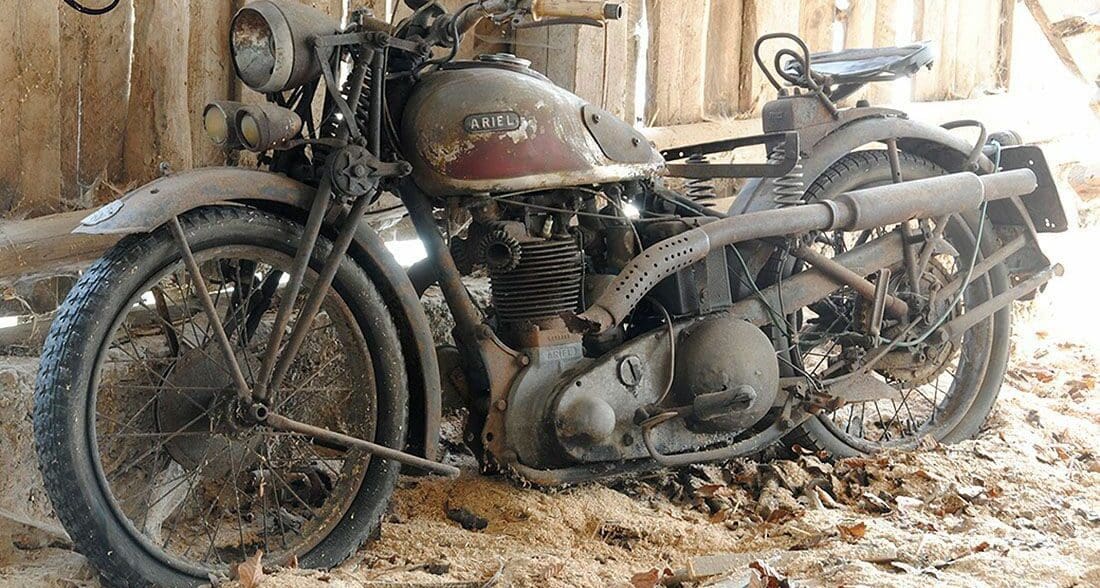Whether it needs a simple fix like replacing the handlebars or a much more elaborate overhaul, rescuing a bike that’s been left to rot can be a rewarding and profitable project. Yes, you heard me right. Profitable. That’s’ because most mere mortals will see a bike that doesn’t start or run as a money pit that’s not worth the hassle. But the very same bike that does run can increase in value by thousands of dollars—all because you spent a day or two diagnosing the issues and getting them sorted.
But whatever your motivations, taking something that’s broken and fixing it never gets old. Modern life can seem like an endless series of emails, spreadsheets and social media rubbish; but spending a day or two away from the screen while working with your hands on something that’s real and right in front of you can be seriously good for your body, mind and soul. So let’s dive right in.
First Things First
For the sake of simplicity we’re assuming you have your junk bike, a simple set of moto tools and some basic mechanical knowledge. If you don’t, I’d suggest that you’ll probably find this pretty hard. But don’t let me dissuade you. If you truly get stuck and you throw in the towel, you can always just part the bike out by dismantling it and selling it piece by piece.
Sure, it’s a bit of a hassle, but you might be surprised at how much you can make by selling 100 bike spare parts for $30 a pop. Actually, anyone with basic math skills wouldn’t be surprised at all, but you get my drift.
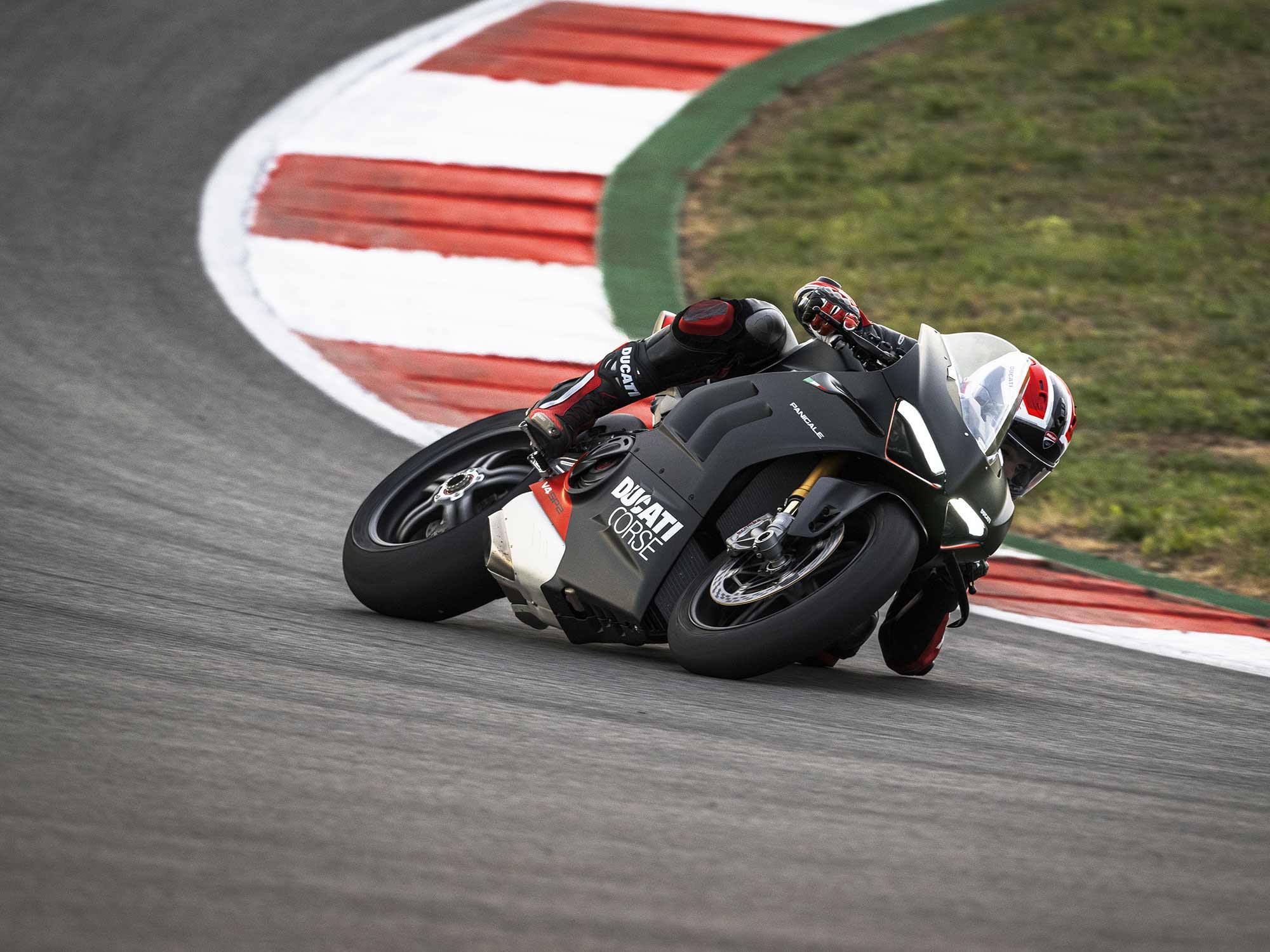
And there’s another proviso I’ll mention here. We’re also assuming that the bike we’re fixing up hasn’t got serious mechanical issues. If the bike was thrashed to the point of failure, then this whole process will be for nought. If the bike has caught on fire, if it has cracks in the engine casing, or if it’s missing any vital components like carbs (sorry kids—we’re not covering fuel injected bikes here) or wiring, then you’re most likely wasting your time. Piston’s connecting rod sticking out through the side of the engine? Forget about it.
Back to Basics
Assuming you’ve passed all those hurdles, then you’ll need to do a few checks before we get our hands dirty. Make sure that the bike’s battery is charged and in good condition. You can either buy a charger or get a new battery and connect it up while ensuring that the bike’s battery leads are making proper contact. Also check that the bike’s fuses are not blown. Lastly, you’ll need to be sure the bike’s motor isn’t seized.
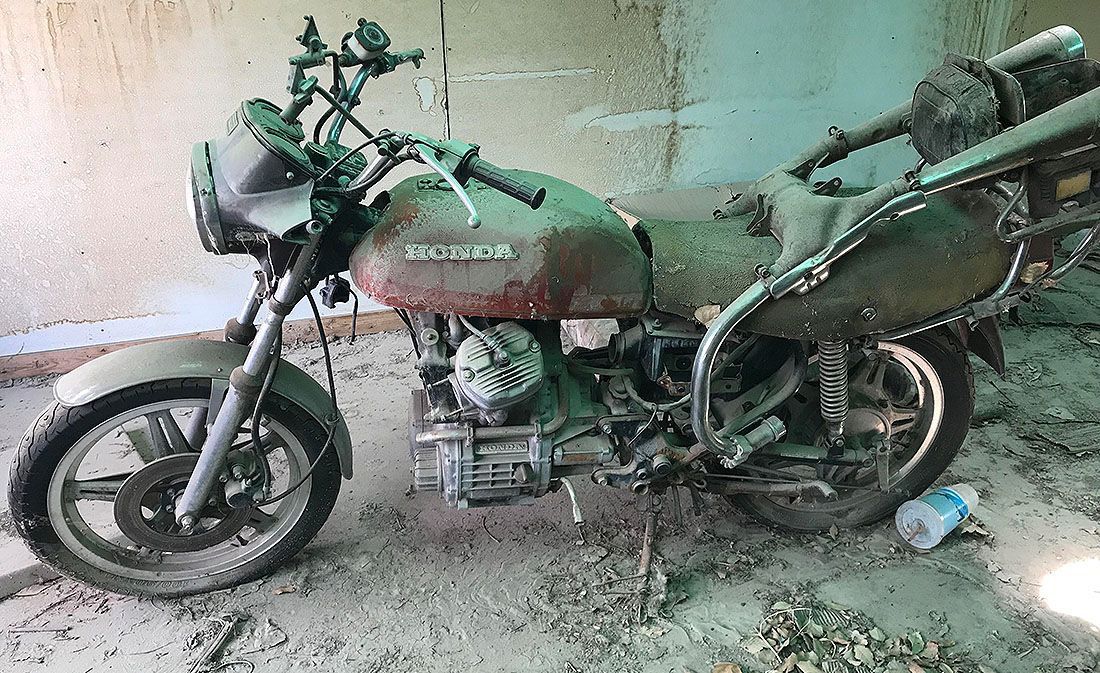
This is pretty easy on a seized kick start bike as the kick lever will also be stuck; this is something you’ll soon discover as you try to kick the bike over. On an electric start bike, just try and start the bike in first gear. If the bike jumps forward, it’s not seized. If it stays still or only moves very slightly, you may have an engine that needs serious tearing down and reassembling, if not a raft of replacement motorcycle parts. Time to call a professional or get busy parting it out.
Oil’s Well?
Now check your motorcycle oil. To get the thing running, the oil doesn’t have to be in amazing condition, but it does need to actually be in the bike and at the right level. If it’s low, top it up. If it’s not deep black or golden brown and runny like warm honey, do an oil change. Bikes left for long periods—especially those left outside—have a habit of getting water in their oil and fuel. This is bad, and you’ll have a hell of a time getting it started if you don’t remedy it first.
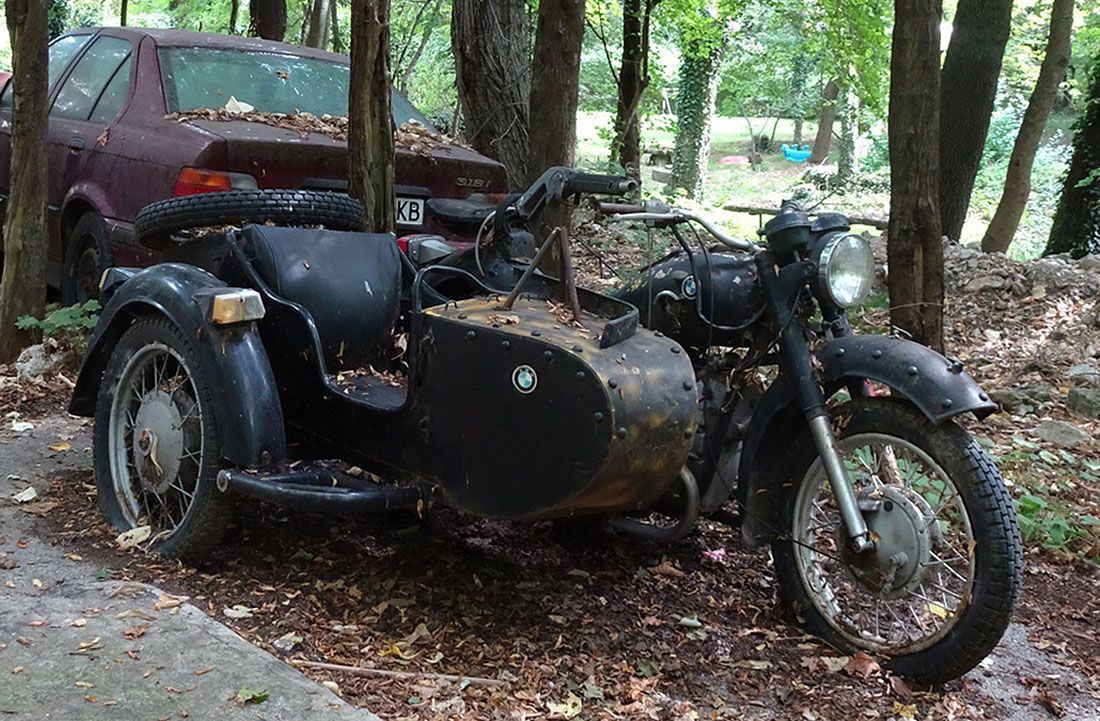
Air Apparent
Now that the oil’s good, open up the bike’s air box. Most likely, you discover a completely blocked filter, no filter, or a badly decayed filter. Or a mouse nest. In all cases, you’ll need to remove everything inside and ensure it’s spotlessly clean. Yes, once the bike is up and running again, you’ll need a new motorcycle air filter, but for now, we’ll just need to make sure that the engine can breathe and that it’s not going to try and pull any small rodents in. That would really suck; both for the mouse and for you.
Fuel to the Fire
Now you’re going to flush the fuel lines and tank. It’s pretty simple on most bikes. Find the petcock at the bottom of the tank and reroute the fuel line into a waste metal gas can. Drain it completely. While you’re at it, make sure the fuel filter is clean and that it’s allowing the fuel to flow from the tank to the carb.
Also, have a quick look inside the fuel tank to make sure it’s looking clean and it’s not a muddy, rusty mess. If it is, you can always just supply fuel to the bike’s carb using a jury-rigged tin can suspended above the bike and plumbed using a spare length of fuel line. And if the tank’s fine, add some fresh fuel to it and make sure the fuel lines are put back where they belong.
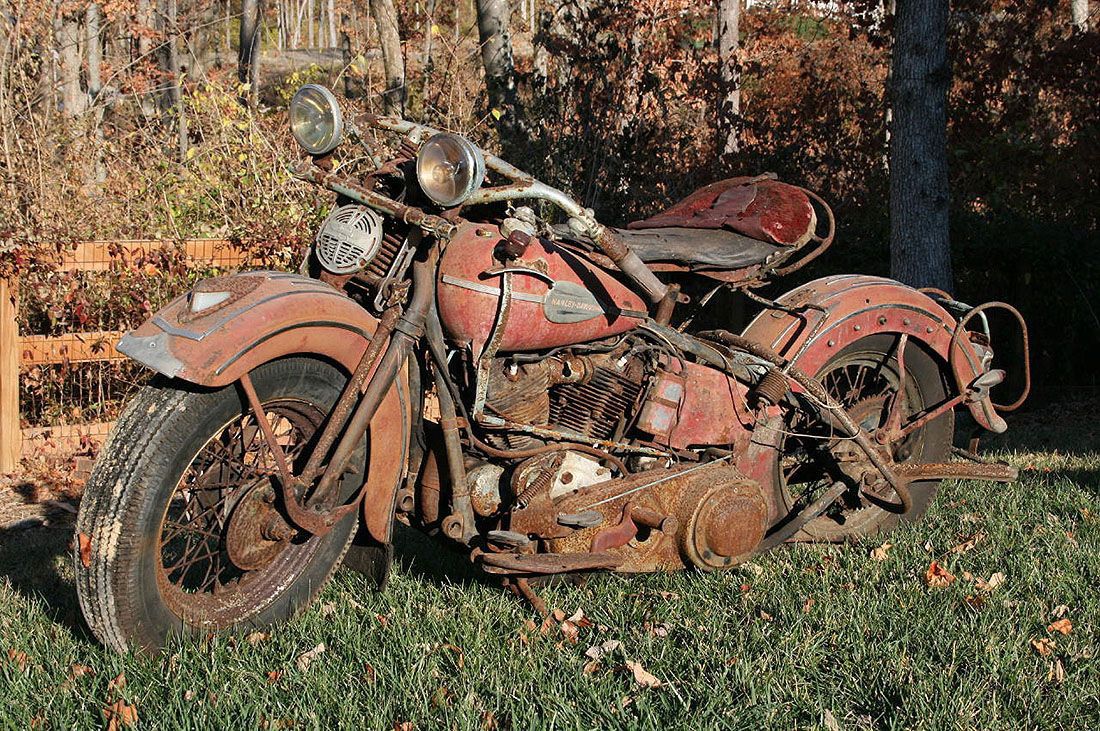
Start as you Intend to Proceed
Just for shi(f)ts and giggles, let’s try and start the bike now. Chances are that it won’t start, but if it does, then count yourself very lucky. Pat yourself on the back and jump to the end of this article. But for most of you, the bike will (hopefully) just turn over without ever firing up. Fear not. This is par for the course.
The cause will almost always be with fuel supply or lack of spark. And if it’s stone cold dead, then you’ll need to go back and check all the bike’s electrical connections to make sure the starter motor is getting volts and that the starter switch is actually connected.
A Little Lightning
Now let’s check that the bike is getting spark. Remove one of the bike’s spark plugs and stick it back into the black lead that was connected to it before you yanked it out. Now rest this loose plug and lead combo on the engine block making sure you can see the part of the plug where the sparks happen. Crank the bike over again. There’s two possible outcomes here. You’ll either see a spark or you won’t.
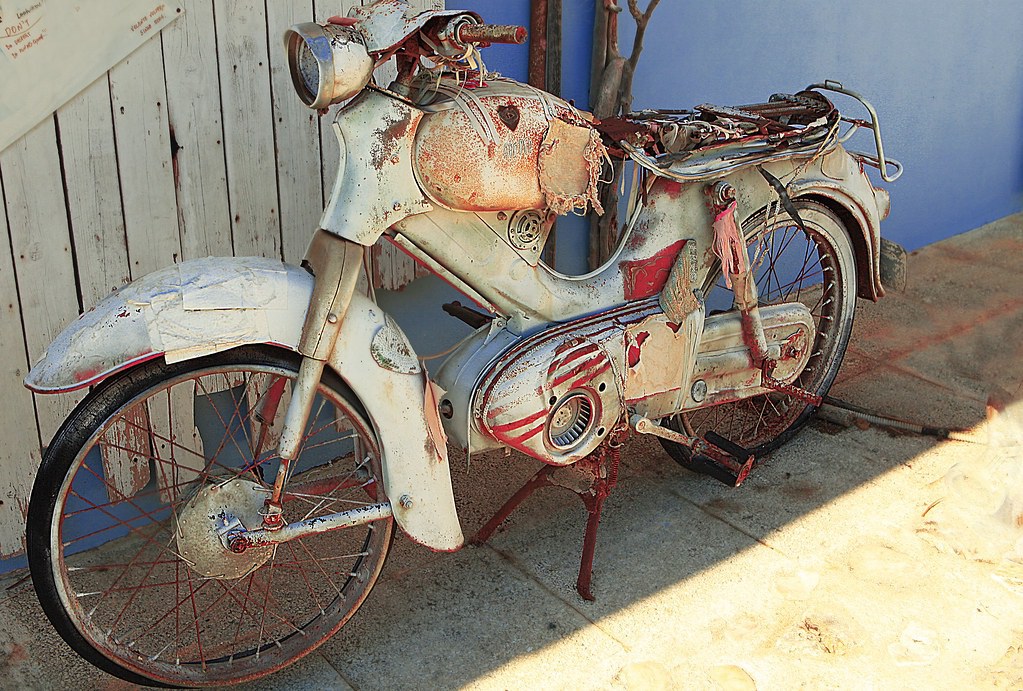
Assuming the plug was making proper electrical contact to the engine block, then seeing a spark is a great sign. It means that your bike’s electrics are A-OK. No spark is a bigger hassle. Try replacing all the bike’s spark plugs and leads and check again. Still no spark? Then you’ve got some problems with your ignition system. Probably time to get a pro who knows how to use a multimeter on the job.
Full Carb Diet
So now we’ve got a spark. The only thing left (barring some pesky gremlins that sometimes throw spanners in the works) will be your bike’s fueling. As you’ve probably read before, leaving a bike to sit for years and years will do bad things to a bike’s carbs. Gaskets perish, floats stop floating, needles get gummed up, and generally speaking, your carb (or carbs) will eventually end up being totally screwed.
There’s two options here; you either get a new carb or you restore the one you have. The first option will be easy, but it’ll cost you. Thankfully, carbs for most bikes aren’t too expensive to replace and neither is restoring them. Unless you live a long way from civilisation, you’re sure to find a local mechanic who’ll be able to tear down a carb and restore it to working condition. Or if you’re really feeling daring, you can try it yourself.
Complete gasket kits for motorcycles can be purchased easily online, and with the help of a YouTube tutorial and an old toothbrush, you just might be able to do it yourself. But it won’t be a walk in the park. Carbs are complex beasts with plenty of fiddly little parts to keep track of.
The Home Stretch
With the carb now doing its job and sparks happening, there’s not much to stop your bike from starting apart from the obvious. Is the bike’s choke working and is it in the on position? Does your bike have a decompression lever and do you know how to use it? Has someone installed a kill switch in your bike that you don’t know about?
As mentioned, there’s always the chance of some infuriating and no doubt niggling little issue that only a seasoned pro will be able to spot. But if the carb is functioning correctly and the spark is sparking, an engine that is turning over has to start. Just like starting a fire, if there’s fuel and an ignition source, it’ll happen sooner or later.
Remember to keep your battery fully charged after any extended attempts to start a bike and never discount trying a can of aerosol engine starter, or as my Father calls it, “START YOU BASTARD.” You can also try a hill start, but remember that if it doesn’t kick over, you’ll need to get it back home at some point that will most likely involve you pushing a bloody big bike uphill against gravity.
There’s also the internet oracle. You’ll find endless online forums where you’ll be able to tap into the global brain’s trust and have your question ignored, mocked, misconstrued or maybe—just maybe—answered. Common issues stopping your bike from starting at this point may include timing adjustments, poor compression, and valve problems. None of these are show stoppers, but they aren’t for fainthearted beginners, either.
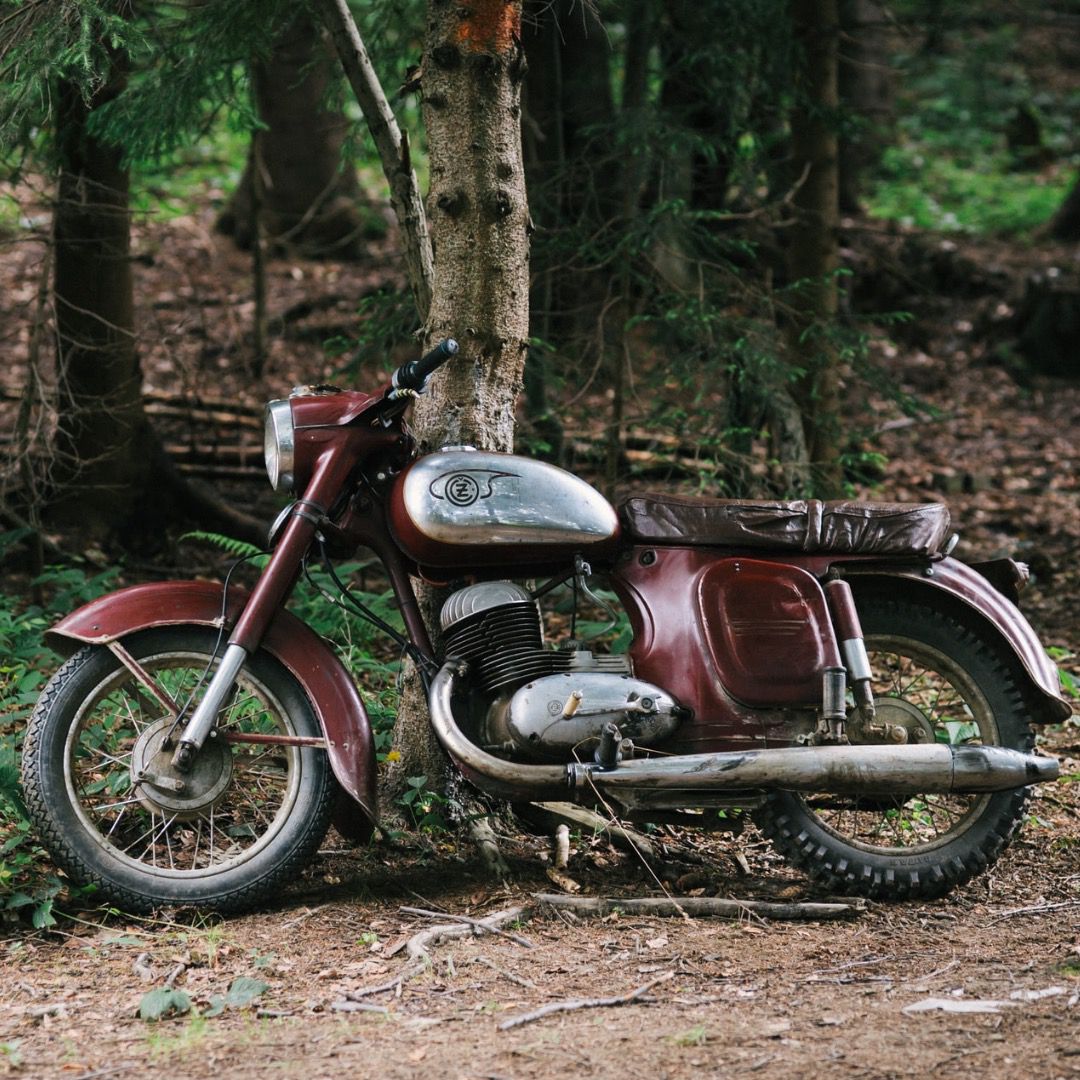
The Sweetest Thing
And then, after what will seem like eons and eons of frustrating hell, the bike will actually start. The sheer elation you’ll experience at this point is truly sublime. Sadistically, the harder the bike was to start, the bigger and more memorable this elation will be. Drink it in, people. It’s better than any social media dopamine hit ever. It’s the same feeling doctors experience bringing a patient back to life or politicians feel after brokering a nuclear peace deal.
And the real genius of the process? That pile of useless metal you started with is now a working, riding motorcycle that has suddenly increased in value. You’re very welcome!


